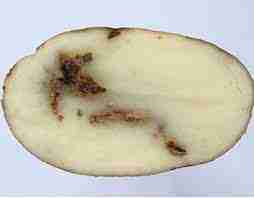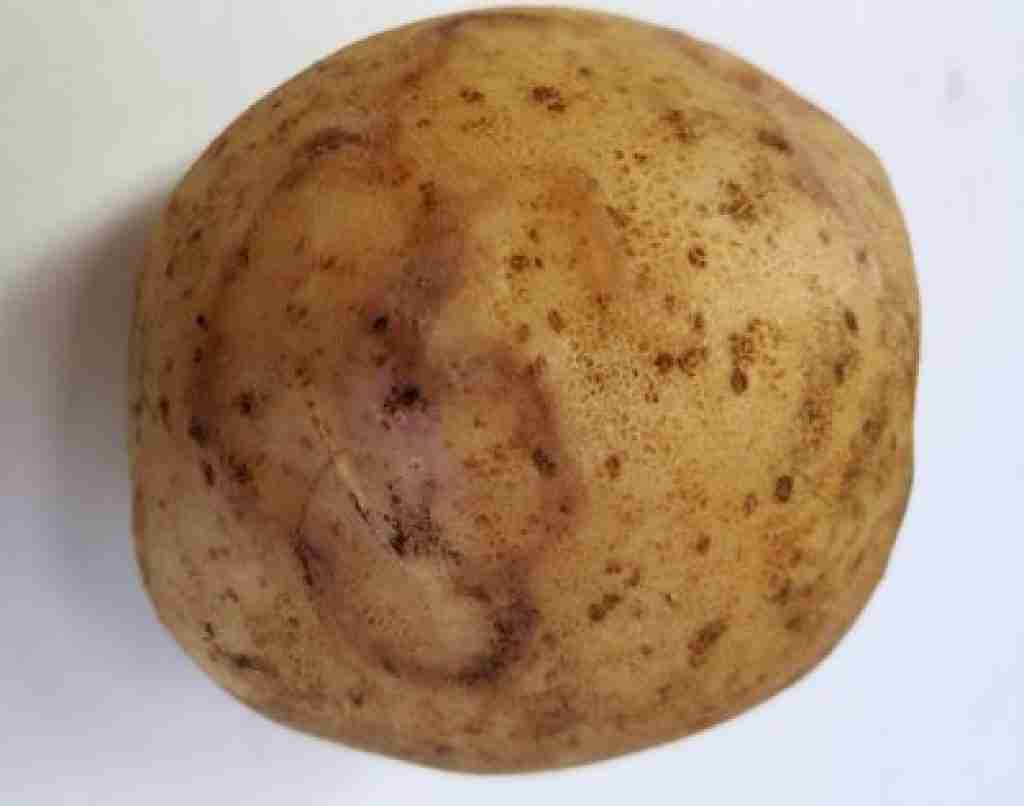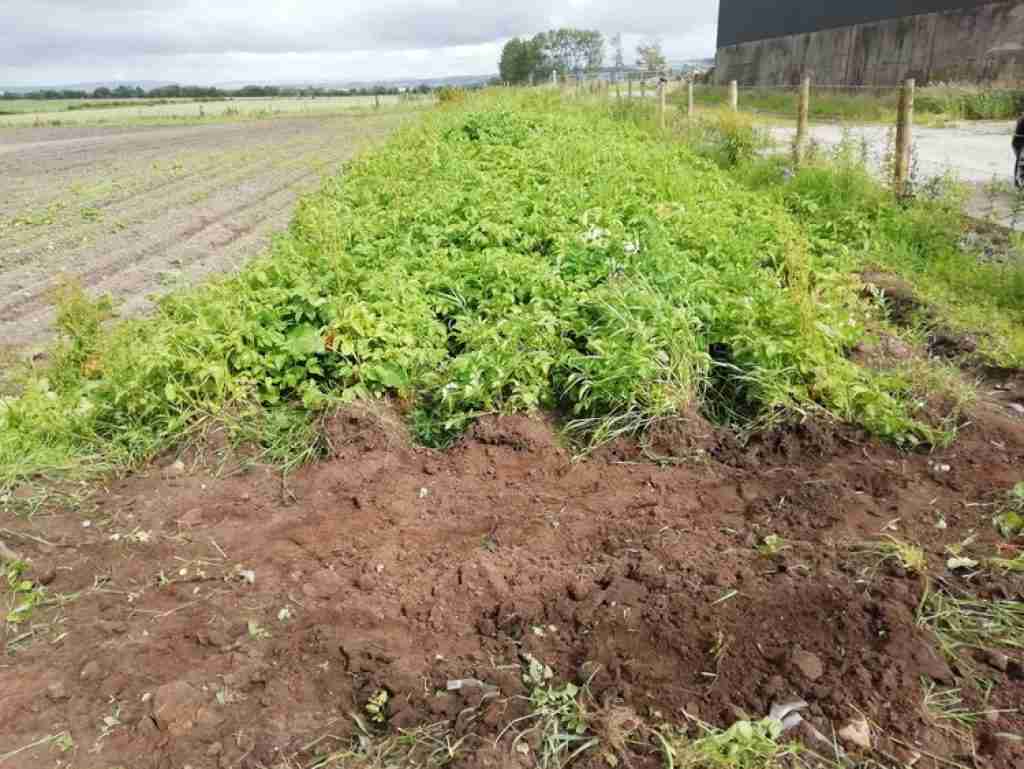Potatoes are an easy-to-grow vegetable that can be planted in the early spring as soon as the soil can be worked. They typically produce well and provide you with an abundance of tubers. While they are generally disease-free (as long as you buy certified seed potatoes) they are not immune to all diseases. Tobacco Rattle Virus in potatoes can go undetected until you harvest the young tubers. No one wants to be surprised by a poor crop of potatoes at harvest time! Find out how to identify Tobacco Rattle Virus in your potatoes and learn how to prevent it from happening again.
What is Tobacco Rattle Virus?
Tobacco Rattle Virus (TRV) is a virus transmitted to potatoes via stubby root nematodes, namely Trichodorus and Paratichodoru. These tiny parasitic insects are so small that you cannot see them with the naked eye. To detect nematodes in the soil requires a microscope. The first sign of nematodes you are likely to see in your garden is Tobacco Rattle Virus in your potatoes.
How is Tobacco Rattle Virus spread?
The Tobacco Rattle Virus can spread in your garden in several ways.
- Nematodes feed on the tiny roots of several plants and may infect your potatoes after feeding on infected host plants, such as members of the nightshade family (tomatoes, tobacco, pigweed, nutsedges, morning glories) purslane and chickweed. The nematodes do not enter the potato tuber, but they may transmit the virus to your potato plants when they feed on their roots.
- TRV can also be spread from infected seed potatoes as the virus survives in the tuber. Planting an infected tuber in the spring will result in infected plants and continue the cycle of Tobacco Rattle Virus in the new potatoes.
- The Tobacco Rattle Virus, and the nematodes that spread it, may remain in infested soil over the winter and transmit the virus to newly planted potatoes the following year.
- It can also be spread on garden tools or knives used to cut your seed potatoes at planting time. It is important to sterilize your tools frequently to prevent spreading TRV.
What are the visible symptoms of a potato crop with Tobacco Rattle Virus?
There are no visible signs of Tobacco Rattle Virus in the vegetation of the potato plant. It typically is not detected until you harvest your first potatoes.
Tobacco Rattle Virus presents with rusty brown blemishes in the potato tuber. These often take the form of arcs or concentric circles but may present as dry, brown sections of the tuber. They may also appear on the outside of the potato tuber.

The arcs or browned areas darken and dry as they age, leaving behind a corky area in the potato leading to the name Corky Ring Spot. Some tubers may show no visible signs of TRV but can still carry the virus. If some potatoes in your garden show signs of the Tobacco Rattle Virus, it is safe to assume they are all infected with the virus.
Is Corky Ring Spot and Tobacco Rattle Virus the same thing?
Corky Ring Spot is the disease in potatoes caused by the Tobacco Rattle Virus. The Tobacco Rattle Virus can affect other plants and result in different symptoms and differing diseases.
Can I prevent getting Tobacco Rattle Virus?
There are a number of things you can do to prevent (or irradiate) TRV in your garden.
- Keep weeds under control and trim tall grass and weeds around your garden. This will help prevent Tobacco Rattle Virus by eliminating host plants for nematodes.
- Purchase only certified seed potatoes for planting in your garden. Saving and replanting tubers from your own garden may seem like a good idea, but if your tubers are infected with TRV you will infect all of your potatoes the following year.
- Rotate your crops. Plant the area with non-host plants, such as alfalfa or barley for a season. If this isn’t practical, plant the area with marigolds. According to LSU College of Agriculture, marigolds give off a substance that kills nematodes when they try to feed on the roots. The effects of growing marigolds in the area will last a year or two.
- Avoid adding vegetation from your potatoes to the compost pile as this may infect your compost. If you have already added debris from your potato plants to the compost pile, do not use the compost in your garden until it is fully composted. Immature compost can carry viruses and other diseases.
- Plant potato varieties that are resistant to the Tobacco Rattle Virus.
- Use a fumigant or nematicide on the soil in late summer or early fall. While these are sometimes effective, their use is limited as nematodes typically travel deep in the soil in the winter to avoid freezing and may escape these applications.
How can you tell if you have nematodes in your soil?
These tiny insects are too small for you to see and can only be detected with a microscope. You will need to take a soil sample and send it to a soil testing facility to find out for sure if you have nematodes in your soil.
Contact your local extension office or soil testing facility and explain that you need your soil tested for nematodes, as a routine soil test does not test for them. Follow their instructions for taking and shipping the soil test.
Tobacco Rattle Virus is often the direct result of nematode activity in your garden. Testing your soil for nematodes, keeping your garden free of weeds that can act as host plants, and rotating your crops is a good way to prevent nematodes in the garden. Although marigolds won’t drive them away, they are effective in stopping their breeding cycle and killing off existing nematodes.
Planting marigolds in areas where you have grown potatoes with Tobacco Rattle Virus may be an effective and eye-appealing way to control nematodes in your garden. I love growing marigolds in the garden as a natural insect repellent and because they are strikingly beautiful, too. What flowers do you plant in your vegetable garden?



